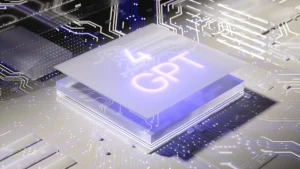
AI-Driven Virtual Assistants has revolutionized the way we interact with technology. From enhancing customer service to streamlining daily tasks, AI has found its most significant application in virtual assistants. These intelligent AI-driven entities are designed to provide users with a seamless and efficient experience. In this article, we will delve into the current trends in AI for virtual assistants, exploring how this technology is shaping the future of human-computer interaction.
Introduction
AI-Driven virtual assistants are at the forefront of technological advancements. Additionally, these AI-driven entities are capable of understanding and responding to human language, making them invaluable in our daily lives.
Conversational AI
Virtual assistants are becoming more conversational and capable of holding more natural dialogues with users. They are able to understand context, follow multi-turn conversations, and provide more accurate responses.
Multimodal Capabilities
Virtual assistants are increasingly incorporating multimodal capabilities, meaning they can process and generate text, images, and speech. This allows for more versatile and interactive interactions.
Personalization
AI-driven virtual assistants are getting better at personalizing their responses and services based on user preferences, history, and behavior, making interactions more tailored to individual needs.
Emotion Recognition
Some virtual assistants are integrating emotion recognition technology to better understand user emotions and respond accordingly. This is particularly useful in customer service and mental health applications.
Voice Cloning
Advances in voice cloning technology enable virtual assistants to mimic the user’s voice, creating a more personalized and engaging experience.
Privacy and Security
There’s a growing emphasis on user privacy and data security, with virtual assistants offering more control over data sharing and storage.
Industry-Specific Virtual Assistants
Efforts are being made to make virtual assistants more accessible to people with disabilities. For example, improved voice recognition is provided for those with speech impairments.
Integration with Smart Devices
Virtual assistants are increasingly integrated with smart home devices; additionally, they’re connected to appliances and IoT (Internet of Things) systems. As a result, users can control and automate their environments through voice commands. Furthermore, this seamless integration offers convenience and efficiency in daily life.
Language Support: Virtual assistants are expanding their language support; additionally, they are making themselves more accessible to users around the world
Accessibility: Efforts are being made to make virtual assistants more accessible to people with disabilities. To illustrate, improved voice recognition is provided for those with speech impairments.
Customization and Developer Tools: Moreover, more tools and platforms are becoming available for developers and businesses to create their own virtual assistants tailored to their specific needs.
Hybrid Models: Combining rule-based systems with machine learning and AI models is becoming a trend; consequently, it allows for greater accuracy and control in virtual assistant responses.
Continuous Learning: Virtual assistants are being designed to learn and improve from user interactions. Additionally, they are adapting to changing needs and preferences, thereby enhancing their functionality.
Human-AI Collaboration: In some cases, virtual assistants are used in conjunction with human agents to enhance customer service and support.
These trends reflect the ongoing evolution of virtual assistant technology, making them more intelligent, user-friendly, and adaptable to various applications and industries.
The Rise of Virtual Assistants
Virtual assistants like Siri, Alexa, and Google Assistant have become household names. Additionally, their widespread use has paved the way for more innovative AI applications.
Natural Language Processing (NLP)
NLP, however, is the backbone of AI-Driven virtual assistants. It enables them to comprehend and generate human language, making interactions more natural and user-friendly. In particular, NLP empowers virtual assistants to understand and respond to human speech, making them an invaluable tool in various applications.
Voice Recognition Technology
Voice recognition technology has evolved significantly. Additionally, virtual assistants can now understand various accents and dialects with remarkable accuracy.
Personalization and Context Awareness
AI-Driven Virtual assistants can now provide personalized recommendations and are context-aware, making interactions more relevant and efficient.
Integration with Smart Devices
Virtual assistants are increasingly integrated with smart devices. Furthermore, this integration allows users to control their homes, cars, and more with voice commands. If you’re interested in AI image recognition, you can read more about it in our article, ‘The Fundamentals of Image Recognition with Machine Learning.‘
AI-Powered Search and Recommendations
AI-enhanced search capabilities, in addition, provide users with quick and accurate information, furthermore, while recommendations are tailored to individual preferences.
Virtual Health Assistants
The healthcare industry benefits from virtual health assistants, enabling patients to access medical information and schedule appointments.
Security and Privacy Concerns
Additionally, with increased interactions, privacy and security have become major concerns. However, ensuring data protection is a top priority. In the evolving landscape of technology and communication, the rise in interactions among individuals and businesses has brought forth new challenges, particularly in terms of safeguarding personal information and sensitive data. These concerns, such as data breaches and privacy violations, underline the need for robust security measures. Despite these growing concerns, organizations and individuals must remain steadfast in their commitment to data protection. Whether it’s implementing encryption protocols, two-factor authentication, or stringent privacy policies, taking proactive measures is crucial to address these pressing issues and maintain trust in the digital age.
Multilingual Virtual Assistants
Developers are working on multilingual AI-Driven virtual assistants, breaking language barriers and expanding their user base.
Emotional Intelligence
Advancements in AI have led to virtual assistants that can detect and respond to human emotions, providing empathetic interactions.
AI-Enhanced Virtual Meetings
AI is enhancing virtual meetings by transcribing conversations, providing real-time translations, and improving audio and video quality.
Enhanced Accessibility Features
Virtual assistants are becoming more accessible to individuals with disabilities, making technology inclusive for everyone.
The Future of AI for Virtual Assistants
The future holds exciting possibilities for AI-Driven virtual assistants, including improved understanding of context, emotional responses, and more.
Sample Python Code for Conversational AI
Creating a full-fledged conversational AI system involves a complex pipeline of natural language processing and machine learning components. Here is a sample python code u can try to build a model.
import random
Define a dictionary of predefined responses
responses = {
“hello”: [“Hi there!”, “Hello!”, “Hey!”],
“how are you”: [“I’m just a computer program, but I’m doing well!”, “I don’t have feelings, but thanks for asking!”],
“bye”: [“Goodbye!”, “See you later!”, “Take care!”],
“default”: [“I’m not sure what you mean.”, “Can you rephrase that?”, “Please ask another question.”],
}
def chatbot_response(user_input):
user_input = user_input.lower() # Convert input to lowercase for case-insensitivity
for key in responses:
if key in user_input:
return random.choice(responses[key])
return random.choice(responses[“default”])
Main conversation loop
print(“Chatbot: Hi! How can I help you today?”)
while True:
user_input = input(“You: “)
if user_input.lower() == “exit”:
print(“Chatbot: Goodbye!”)
break
response = chatbot_response(user_input)
print(f”Chatbot: {response}”)
This code defines a dictionary of predefined responses for specific input phrases and a simple chatbot_response function that matches the user’s input to responses. The chatbot generates a random response from the list associated with the matched key.
You can extend this basic example by integrating more advanced natural language processing (NLP) libraries like spaCy or NLTK, or by connecting to a cloud-based NLP service for better language understanding and more context-aware responses. For a production-ready conversational AI system, you would typically use a framework like Rasa or Dialogflow, which provide tools for building more sophisticated chatbots.
Conclusion
Additionally, AI-Driven virtual assistants is continually evolving. As AI technology advances, we can expect more personalized, efficient, and empathetic virtual assistants that cater to our every need. In the future, this will become increasingly important, as these virtual assistants will play a vital role in various aspects of our lives, from simplifying everyday tasks to providing valuable support in professional and personal contexts. The continuous development of AI is opening up new possibilities, making virtual assistants not just more capable but also more attuned to our preferences and emotions, ultimately enhancing the quality of human-computer interactions.
FAQs
A: Absolutely. Advances in AI are making virtual assistants more intelligent and capable of understanding and responding to a wider range of queries.
A: Developers are implementing strict privacy measures and data encryption to safeguard user information.
A: Yes, virtual assistants are increasingly being used in business environments for tasks like scheduling, data analysis, and customer support.
A: The future promises even more advanced virtual assistants with increased emotional intelligence and seamless integration into our lives.
A: Multilingual virtual assistants employ language models that can understand and respond in multiple languages, breaking language barriers.
In conclusion, AI for virtual assistants is an exciting field with endless possibilities. As AI technology continues to advance, we can expect virtual assistants to become an even more integral part of our daily lives.







